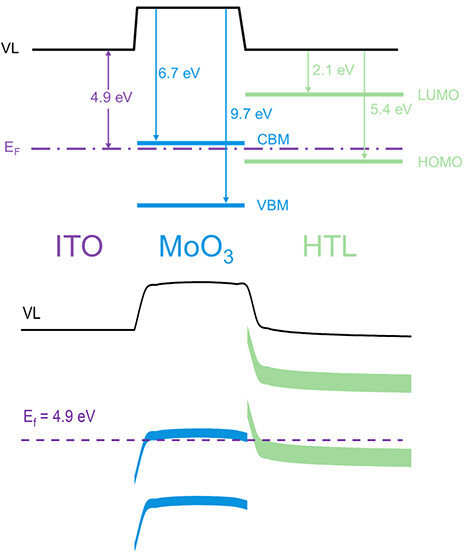Electrode Doping and Dielectric Effect in Hole Injection into Organic Semiconductors through High Work-Function Oxides
Qi Shen1, Xiaojuan Sun1, and Song Chen1,2*(陈崧)
1Suzhou Key Laboratory of Novel Semiconductor-optoelectronics Materials and Devices, College of Chemistry, Chemical Engineering and Materials Science, Soochow University, Suzhou 215123, Jiangsu, China
2Jiangsu Key Laboratory of Advanced Negative Carbon Technologies, Soochow University, Suzhou 215123 Jiangsu, PR China
J. Phys. Chem. Lett.2023, 14, 4830−4836
Abstract:High work-function metal oxides are common for enhancing hole injection into organic semiconductors. However, the current understanding ofthe electrostatic mechanism needs to be more consistent with materials' electronic properties. Here, we study the electrostatic profile of high work-function oxides by considering their dielectricity and energetic disorder. Using MoO3 as an example, we first show that the significant vacuum-level change at the electrode-oxide interface originates from electrode doping rather than the conventionally assumed interface dipole. Moreover, electrode doping is enough to explain the Fermi-level shift, so MoO3's characteristic n-type property is not necessarily due to intrinsic donors. This conclusion also applies to the n-type oxides with reduced work functions, likeWO3, V2O5, and p-type NiO. Finally,the dielectricity of the oxide, either n-type or p-type, reduces the surface p-doping of the further deposited organic layer. Increasing the oxide's metallicity and energetic disorder facilitates the hole injection.

链接://pubs.acs.org/doi/10.1021/acs.jpclett.3c00770